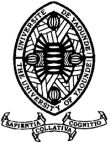Management of Child Burns at Yaoundé Central Hospital: A Report of 30 Cases
DOI:
https://doi.org/10.5281/hra.v2i2.5233Keywords:
Burns, Child, YaoundéAbstract
RÉSUMÉ
Introduction. La brûlure constitue une urgence médico-chirurgicale qui peut engager le pronostic vital et fonctionnel chez l’enfant. L’objectif de ce travail était de décrire la prise en charge de la brûlure de l’enfant à l’hôpital central de Yaoundé. Méthodologie. L’étude a duré 9 mois au Service de Chirurgie pédiatrique de l’Hôpital Central de Yaoundé du 1er Janvier au 31 Septembre 2019. Nous avons inclus tous les enfants âgés de 0 à 15 ans, admis dans le service pour brûlure et dont les parents ont été consentants pour l’étude. Résultats. Nous avons analysé la prise en charge de 30 enfants dont l’âge moyen était de 3,6 ans avec un sex-ratio de 0,7. Les accidents domestiques par ébouillantement étaient la principale cause (60%). Le miel (36,7%) et les œufs (23,3%) étaient fréquemment appliqués par les patients avant l’arrivée à l’hôpital. La brûlure superficielle du second degré était la plus fréquente (56,7%). Le tannage à l’éosine aqueuse (86,7), le pansement gras (43,3) et la greffe de peau (43,3%) ont été les principales mesures de prise en charge initiale. Le choc hypovolémique (20%) et la surinfection (16,7%) étaient les principales complications observées. La durée d’hospitalisation moyenne était de 10,6 jours et le taux de mortalité de 16.7%. Conclusion. La brûlure de l’enfant est essentiellement causée par des accidents domestiques. Sa prise en charge varie en fonction de la gravité de la brûlure. La mortalité est élevée.
ABSTRACT
Introduction. Burns are a medical-surgical emergency that can have a vital and functional prognosis in children. The objective of this study is to investigate the management of burns in children at the Central Hospital of Yaoundé. Methodology. The study lasted for 9 months at the Pediatric Surgery Department of the Central Hospital of Yaoundé, from January 1st to September 31st, 2019. We included all children aged 0 to 15 years, who were admitted to the department for burns and whose parents gave their consent for the study. Results. We analyzed the management of 30 children, with an average age of 3.6 years and a sex ratio of 0.7. Scalding accidents were the main cause (60%). Honey (36.7%) and eggs (23.3%) were frequently applied by the patients before arriving at the hospital. Superficial second-degree burns were the most common (56.7%). Treatment measures included eosin tannate (86.7%), greasy dressing (43.3%), and skin graft (43.3%) as initial management. Hypovolemic shock (20%) and infection (16.7%) were the main complications observed. The average hospital stay was 10.6 days and the overall mortality rate was 16.7%. Conclusion. Burns in children are mainly caused by domestic accidents, and their management varies according to the severity of the burn. Mortality is high.
Downloads
Published
How to Cite
Issue
Section
License
Authors who publish with this journal agree to the following terms:
- Authors retain copyright and grant the journal right of first publication with the work simultaneously licensed under a Creative Commons Attribution License CC BY-NC-ND 4.0 that allows others to share the work with an acknowledgement of the work's authorship and initial publication in this journal.
- Authors are able to enter into separate, additional contractual arrangements for the non-exclusive distribution of the journal's published version of the work (e.g., post it to an institutional repository or publish it in a book), with an acknowledgement of its initial publication in this journal.
- Authors are permitted and encouraged to post their work online (e.g., in institutional repositories or on their website) prior to and during the submission process, as it can lead to productive exchanges, as well as earlier and greater citation of published work










